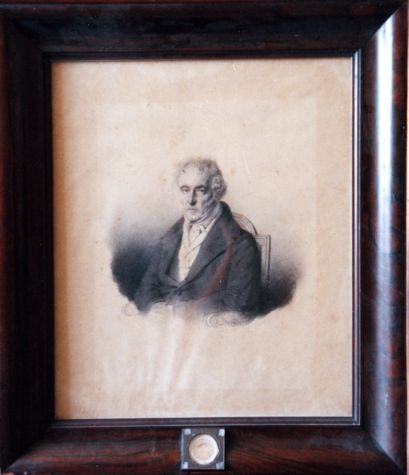
Portrait painted en 1836 par A. L. Demoussy (1809-1880)
Detail of the portrait - Detail of the medallion

Portrait painted en 1836 par A. L. Demoussy (1809-1880)
Detail of the portrait - Detail of the medallion
The French writer Honoré d'Urfé (1567-1625) is the author of l'Astrée, a pastoral novel in three parts telling the sentimantal love affairs of Céladon and Astrée. Since then the word Céladon has come to designate in French a platonic, sentimental, shy and faithful lover; as an adjective, it means also a kind of pale green.
Fourier invented the neologism céladonie; this name means sentimental love, by opposition with physical lust. He recognized the necessity and complementarity of both aspects of love. In Civilization, traditional morals extol sentimental love and condemns unbridled physical lust; the latter, like a wild animal, is acceptable only within the bounds of marriage, with the purpose of procreation. Fourier remarked that such an unbalanced view produces the opposite excess in public opinion and private lives: sentimental love is scoffed at, and serves only as a thin cover for sexual lust, which is the true purpose of courtship. The more morals condemn adultery and debauchery as vice, the more public opinion, novels, and theatre defend them.
Love being a compound made of two complementary elements (physical and sentimental), it is impossible to simplify it to only one of them. Trying to do so only leads to a "subversive" development, where the repressed side revolts against the other, a situation which leads to vices and perversions. Fourier criticizes all the restrictions to love in Civilization, and announces its balanced development in future Harmony. He envisages even the possibility of a purely sentimental love relation: such a celadony can be sustained only if each of the two lovers is engaged in a compound relation with one or several exterior partners. Harmony will reward angelic couples, that is beautiful lovers who will - for a limited time period - lead a purely sentimental celadony while at the same time satisfying the demands of a great number of exterior suitors.